A Profile of Astrophotographer Kerry-Ann Lecky Hepburn
April 13, 2018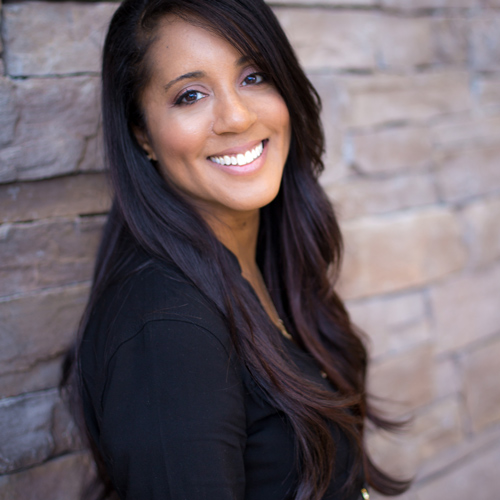 Kerry-Ann Lecky Hepburn
Kerry-Ann Lecky HepburnIntroduction
In this Q&A at Astronomy Connect, we feature Kerry-Ann Lecky Hepburn. In her day job, Kerry-Ann is a professional meteorologist who works behind the scenes as a forecaster, and she occasionally appears on air at Canada's Weather Network to answer questions about meteorology and astronomy. But she's also a serious amateur photographer and astrophotographer with decades of experience and several NASA APOD's to her credit.
Based in the Niagara Peninsula region of Ontario, Kerry took up astronomy and astrophotography before high school and continues to be captivated by the night sky. She has a backyard observatory and was a member of the Toronto Chapter of the Royal Astronomical Society of Canada (RASC) and also a very active member of Hamilton Amateur Astronomers in Hamilton, Ontario. And if that's not enough, Kerry also has a passion for flying, holds a private pilot's license, and enjoys volunteering with the Civil Air Search and Rescue Association of Canada.
Here's our Q&A with Kerry-Ann Lecky Hepburn...
Q: How did you become interested in astronomy and astrophotography?
Kerry-Ann Lecky Hepburn (KALH): I'd say what got me interested in astronomy was my general fascination with the mysteries of the night sky. This started when I heard the news of Halley's Comet back in the 1980s. My parents helped to nurture my interest by getting me the book Nightwatch by Terence Dickinson. I later got binoculars and a small 4.5-inch Newtonian reflector. I was hooked!
My interest in astrophotography came a little later when I was in high school and I took a class in film photography. Since there was no such thing as the internet back then, at least not as we now know it, I started to learn about astrophotography by reading books from the library and picking up monthly copies of Astronomy and Sky and Telescope magazines, and also by practicing it with a lot of trial and error and many, many rolls of wasted film. I also got a few good pointers from local astronomy stores. Later, I learned more through online research and connecting with fellow astrophotographers.
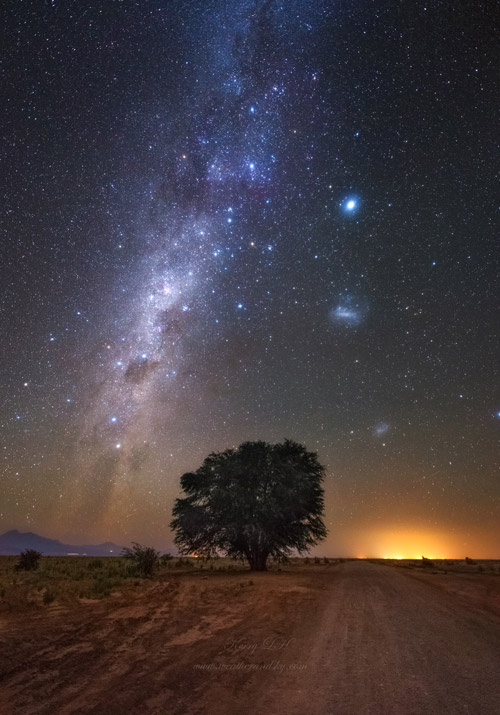 Southern Milky Way and Magellanic Clouds from northern Chile. Credit and copyright Kerry-Ann Lecky Hepburn.
Southern Milky Way and Magellanic Clouds from northern Chile. Credit and copyright Kerry-Ann Lecky Hepburn.Q: Were you inspired by anyone to learn more about astronomy or to become an astrophotographer?
A: Back then I really didn't know anyone that was doing astronomy or astrophotography other than the authors in the books that I read or the people in the telescope stores. I can say my main inspiration was my extreme curiosity and having parents that always supported me.
Q: Tell me about your first astrophoto through a telescope.
A: My first telescope was a 4.5-inch Newtonian reflector on a shaky mount. My parents bought it for me for Christmas when I was 11 years old. My first astrophotos were of Venus and Jupiter. I attached my second-hand Minolta film camera to this little telescope. I remember I overestimated the exposure time, but I was happy to be able to make out the moons of Jupiter and the crescent shape of Venus even though they were somewhat streaked, blurred and blown out.
Q: Do you do much work through the telescope these days, or are you mostly doing nightscape images with a DSLR?
A: In the past year I have been doing more nightscapes because of the weather. Clouds and transparency have less of an impact on nightscapes compared to doing deep-sky astrophotography.In fact, I sometimes find clouds can add some uniqueness to a night scene. I also need to make some tweaks to my deep-sky set-up when the weather gets warmer. But in the late spring and early summer, I plan to get back into hunting my favorite targets for long focal-length imaging.
Q: What's your current set-up (telescope, camera, mount, etc.) for 'through the scope' astrophotography?
A: Currently, I'm using a Skywatcher eq-6 mount, Astro-Tech 8-inch RC optical tube, and an SBIG 8300 mono camera with eight-position filter wheel. My set-up is in my SkyShedPOD with a desktop computer for control, and I will often remotely control it from inside the house.
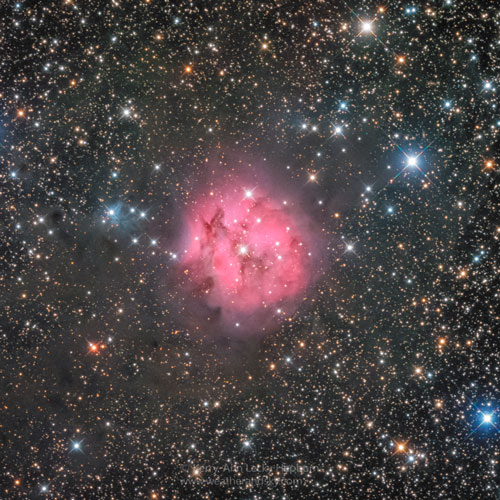 The Cocoon Nebula (Caldwell 19). Credit and copyright Kerry-Ann Lecky Hepburn.
The Cocoon Nebula (Caldwell 19). Credit and copyright Kerry-Ann Lecky Hepburn.Q: What's your favorite type of object to image through the telescope?
A: I am in love with dusty reflection nebulae. I find them very mysterious and they are a fun challenge from my suburban skies.
Q: What is your current set-up- camera and lenses- for nightscapes?
A: For nightscapes I use a Canon 6D full-frame DSLR and various lenses like the 50mm, 24-105mm, 17-40mm and my absolute favorite, the Sigma ART 14mm f/1.8 lens that I recently purchased before my big trip to Chile.
Q: Do you have any favorite accessories for astrophotography or nightscape imaging?
A: I love my iOptron SkyTracker mount because it's so light and easy to take with me anywhere. It's my way of being able to image targets that I can't image from home. At home, I do not disturb my main setup in the SkyShedPOD, so having this portable tracking mount is a must for me. It's beneficial for nightscapes and for short focal-length deep-sky imaging with a DSLR.
Q: Would you say you have a particular style in your nightscape work, either in composing your images or in post-processing?
A: From what others have told me, my images have bold color and clarity, but with a bit of an ethereal feel. It's really hard to recognize your own style but easier to recognize others. One tip I've found is to assemble your photos in a grid. When you compare your grid with those of other photographers, you will start to notice what makes your images different from theirs. It could be color ranges, differences in contrast and detail, composition, and so on.
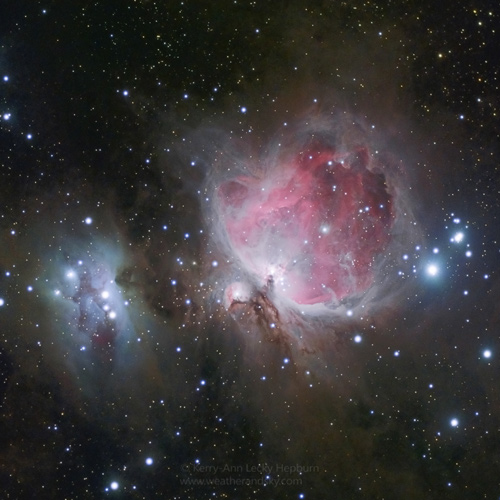 The Orion Nebula Region. Credit and copyright Kerry-Ann Lecky Hepburn.
The Orion Nebula Region. Credit and copyright Kerry-Ann Lecky Hepburn.Q: How do you plan for a nightscape shoot?
A: First, I think about what I want to image and the type of location I envision. I will use apps and software like SkySafari, Stellarium, Google Earth, PhotoPills and Photographer's Ephemeris to figure out the right season and time of month to shoot. Also, with some of those apps, I will fine tune my location for where I will do the imaging. Finally, weather will be the final determinator for whether the shot will happen. There are so many variables, but this is part of the fun and challenge of nightscape imaging.
Q: Where do you do most of your imaging?
A: I do deep-sky imaging from home in the Niagara Region of Ontario, Canada. I will try to do some of my nightscapes from home, usually, if I can't find someone to accompany me to a dark sky location.
Q: Do you spend much time visual observing anymore?
A: I love visual observing, but I haven't done it as much as I would like in the past year. I have a 12-inch Dobsonian that I wheel out of the garage when friends want to have a look through it. I also enjoy the views through my 15x70 binoculars. I will take them with me anywhere I might have a chance to enjoy some dark skies.
Q: What's your least favorite part of astrophotography?
A: Staying up late! I'm not a night owl and sometimes it's torturous to think of having to stay up past bedtime, but usually the adrenaline kicks in if I'm having a great observing or imaging session. That adrenaline will usually can carry me through the entire night into the morning.
Q: You recently traveled to the southern hemisphere for a shoot. How did you plan for that trip, and how did it go?
A: Going down to the Atacama desert region of Chile was the chance of a lifetime, so I had to make sure to carry the best gear down with me. I purchased the new Sigma ART 14mm f/1.8 lens, the fastest wide-angle lens for full-frame cameras. I didn't get too complicated with my setup. I mainly packed my camera, almost all my lenses (because I couldn't prioritize them at the time), some filters, the small iOptron Skytracker, and two tripods. In the end, I used almost everything I packed. When I went, the weather was not expected to be perfect, but given this rare opportunity I couldn't say no. I went down for almost a week, and half the time the sky was clear. The rest of the time there were so many incredible sites to enjoy during the day. I will go back to this place in a heartbeat.
Q: Where are some dark-sky locations you might like to visit next?
A: Other than going back to Chile, I would love to go to Iceland for the Northern Lights, and the Azores and Death Valley for nightscapes. I also think there are so many places to explore in my own country of Canada.
Q: What's your favorite of all your nightscape photographs?
A: I have a feeling that my favorite image is still on my hard drive waiting to be processed :). For now,though, I have to say that my Milky Way scene from Binbrook, Ontario is the one that I am most proud of and connected to because it took a lot of work to execute and process at the time (which was ten years ago, in the summer of 2008). I employed stacking to get as much depth as I could out of the image given the light pollution in the area. This image was also my first NASA APOD, and it has been featured in many textbooks. So although it's not my best-quality image now, it is dear to me.
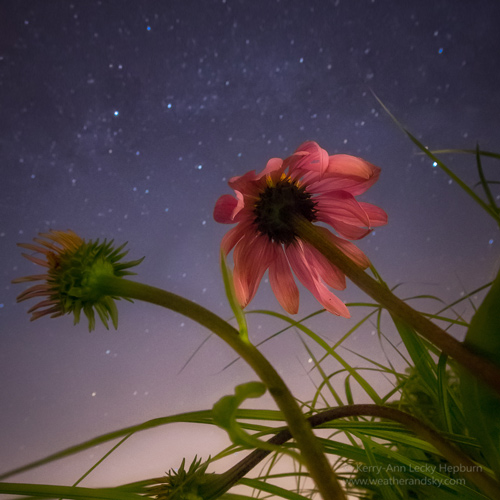 A huge depth of field showing flowers and stars. Credit and copyright Kerry-Ann Lecky Hepburn.
A huge depth of field showing flowers and stars. Credit and copyright Kerry-Ann Lecky Hepburn.Q: You have a particularly beautiful—and unique—image of wildflowers in the foreground and stars in the background. How did you make this image?
A: I really wanted to combine my love of close-up flower photography and my love of night sky photography. For this mini project, I used my 17mm lens because it has a short focusing distance, and I set it up on a tripod as low to the ground as possible. I then chose an f-stop that would help maximize the detail in the flowers and still be able to capture the stars so they wouldn't be too blurry in the background. I wanted a little bit of light added to the scene for a unique quality and dimension. So I shone my iPod Touch screen (I chose a warm yellow color) on the underside of the flowers in a few sweeping motions to get the right effect. This took numerous attempts, but eventually I got a few frames I was happy with. I repeated this on a few other occasions with other flowers on my property. I plan to do more of these. It encourages me to keep up with my gardening and to appreciate the night view from my home. This sort of image can really be done anywhere, but I enjoy doing this in a familiar and accessible place.
Q: How has your work and interest in astronomy and astrophotography changed your life for the better?
A: It has made my life better in that I have an even greater appreciation of the night sky. It is so incredible what is up there, and I get an even greater joy in sharing this with others who might not be able to enjoy it for themselves.
Q: Do you have any insights about how to get more people, especially younger people, interested in astronomy?
A: This is a tough one, but I think the best way to encourage young people into the hobby would be to try to engage them through popular social media channels. There are many astronomy clubs that limit their content to their email lists or their website. By posting often on the various social channels, they can generate additional interest in their meetings and events. This most certainly would be more welcoming to newcomers.
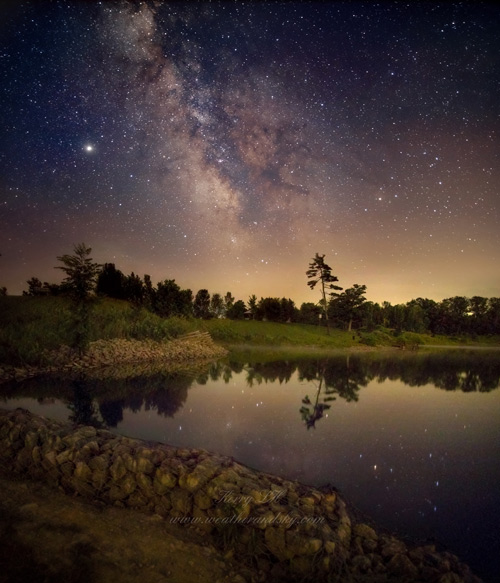 The Milky Way from Binbrook, Ontario. The Orion Nebula Region. Credit and copyright Kerry-Ann Lecky Hepburn.
The Milky Way from Binbrook, Ontario. The Orion Nebula Region. Credit and copyright Kerry-Ann Lecky Hepburn.Q: Where can we see more of your work and follow your latest images?
I have accounts on almost all the main social media platform with the handle "weatherandsky".
Other channels are:
- Website: http://www.weatherandsky.com is up to date with my latest deep sky images.
- Instagram: https://www.instagram.com/weatherandsky is where I've been posting my nightscapes more frequently.
- Facebook: https://www.facebook.com/weatherandsky
- Twitter: https://twitter.com/weatherandsky
- Google Plus: https://plus.google.com/u/0/+KerryAnnLeckyHepburn
- Youtube: https://www.youtube.com/user/weatherandsky
***
This article is © AstronomyConnect 2018. All rights reserved. Images © Kerry-Ann Lecky Hepburn 2018.
Please login or register to watch, comment, or like this article.BillP772 and Dave In Vermont like this.
-
Final Announcement: We're Saying Goodbye to AstronomyConnect. Read Our Closing Notice.
Dismiss Notice
New Cookie Policy
On May 24, 2018, we published revised versions of our Terms and Rules and Cookie Policy. Your use of AstronomyConnect.com’s services is subject to these revised terms.

